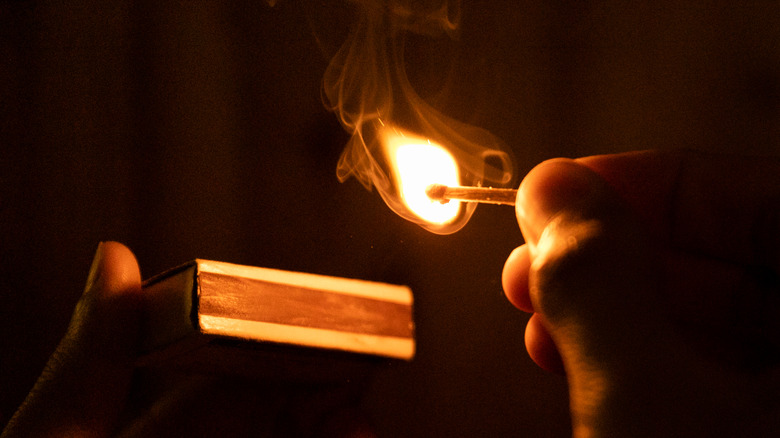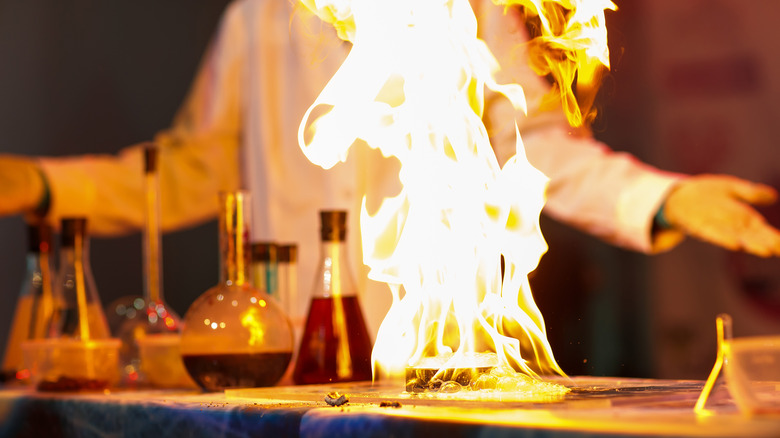How Matchsticks Were Created By Accident
In 1826, a chemist by the name of John Walker made an accidental discovery that would forever change history. According to the BBC, Walker was surprised when a stick coated in chemicals caught fire after being scraped across the stone fireplace in his home. This caused him to experiment with different combinations of chemicals until he was able to invent the first friction-based matchstick.
John Walker was able to create his matchsticks by using a mixture of antimony sulfide, potassium chlorate, gum, and starch (via Thought Co.). He used a stick to stir them together, and allowed a blob of the materials to dry on the end of the stick. When struck on the right surface, the chemicals would ignite and could be used to light fires, candles, and the like. According to Smithsonian Magazine, Walker began to sell his newly invented matchsticks, which he called "friction lights" in April of 1827. From there, the friction matchstick took off in popularity.
Many chemical reactions are able to generate fire
Matchsticks are able to ignite because of chemical reactions taking place when heat is applied. Many chemical reactions are able to generate heat and fire. In the case of modern matchsticks, striking them on a surface allows red phosphorus on the surface of the match to turn into white phosphorus (via Britannica). According to Chemistry Views, this triggers a chemical reaction between sulfur or antimony sulfide and potassium chlorate in the match head. After a reaction is started between the chemicals in the match head, the wood of the stick helps to act as fuel for the fire (via The Conversation).
In order for a fire to be created, there must be fuel, heat, and oxygen. This is known as the fire triangle (via Smokey Bear). The reason matches are so efficient is because all three elements needed in order to create fire are contained within the match. Friction causes heat, oxygen is contained within the potassium chlorate and the air, and the wooden stick of the match itself acts as fuel.
John Walker never patented his matchstick
Interestingly enough, John Walker never patented his matchstick invention. Part of the reason behind this decision was because the coating on the end of the matches would sometimes fall off while burning, damaging whatever it landed on (via Smithsonian Magazine). Still, according to the BBC, he was encouraged to apply for a patent anyways in order to prevent his work from being stolen, but chose not to.
Because Walker never patented the matchstick, opportunities to copy his invention were open for the taking. Samuel Jones saw a demonstration of Walker's matchstick and decided to create his own. According to Thought Co., Jones began to sell his own version of the matchstick, which he called "Lucifers." These Lucifers were known to sometimes ignite in an explosive fashion and had a strong "firework" smell to them. Later versions of the matchstick created by others would improve the reliability of the match, creating the safer matches we know and use today.


